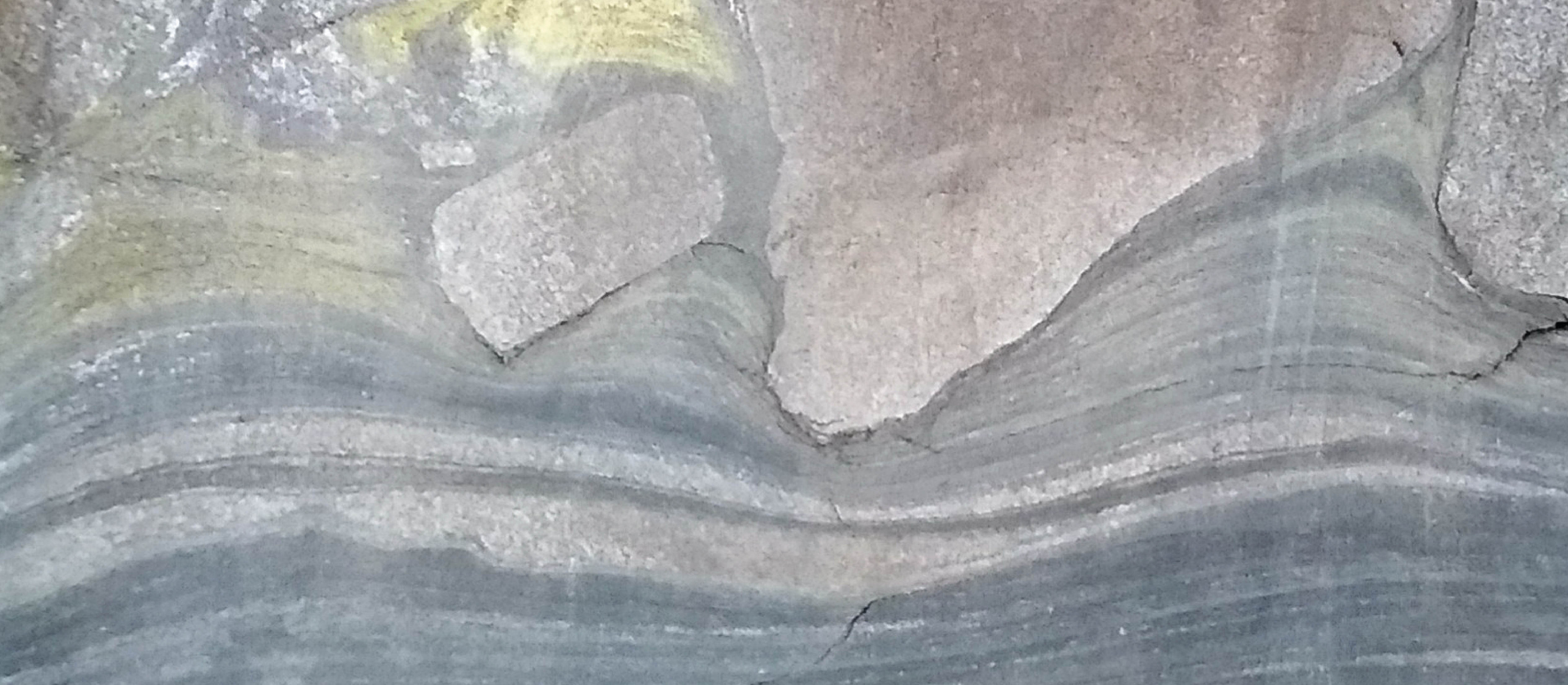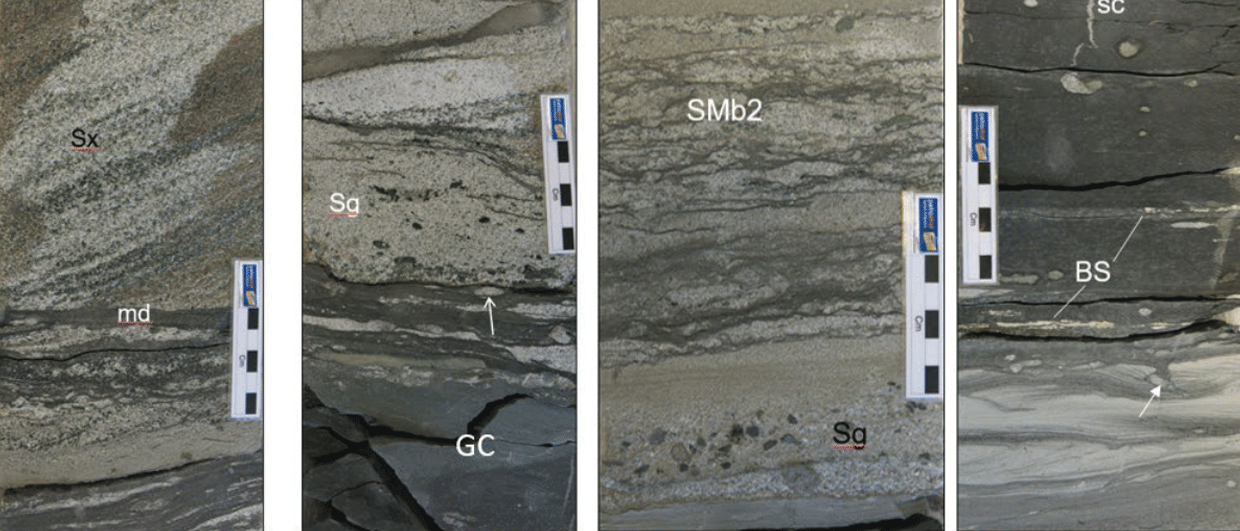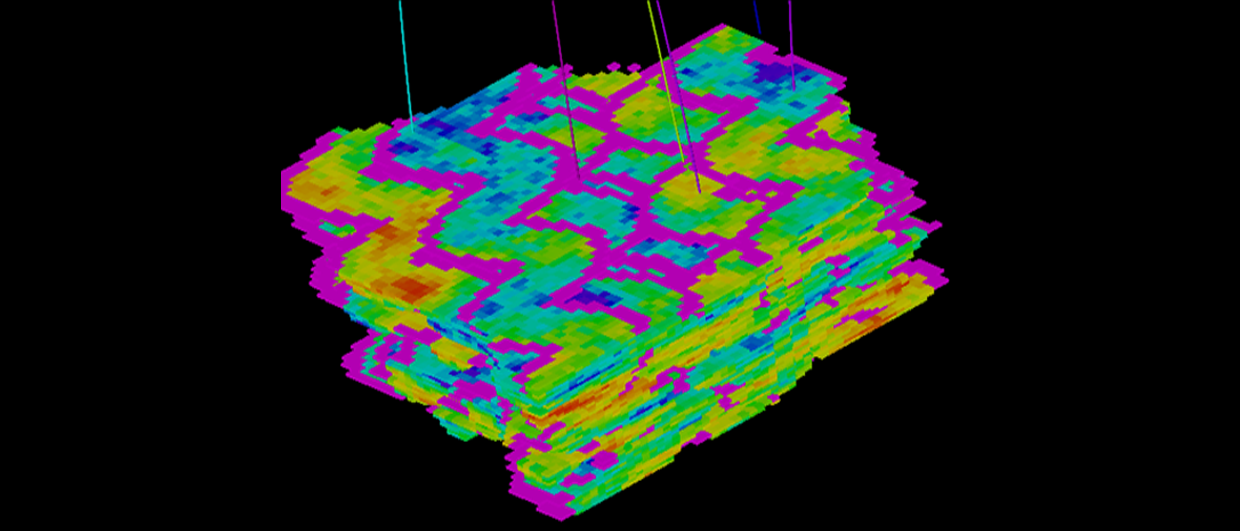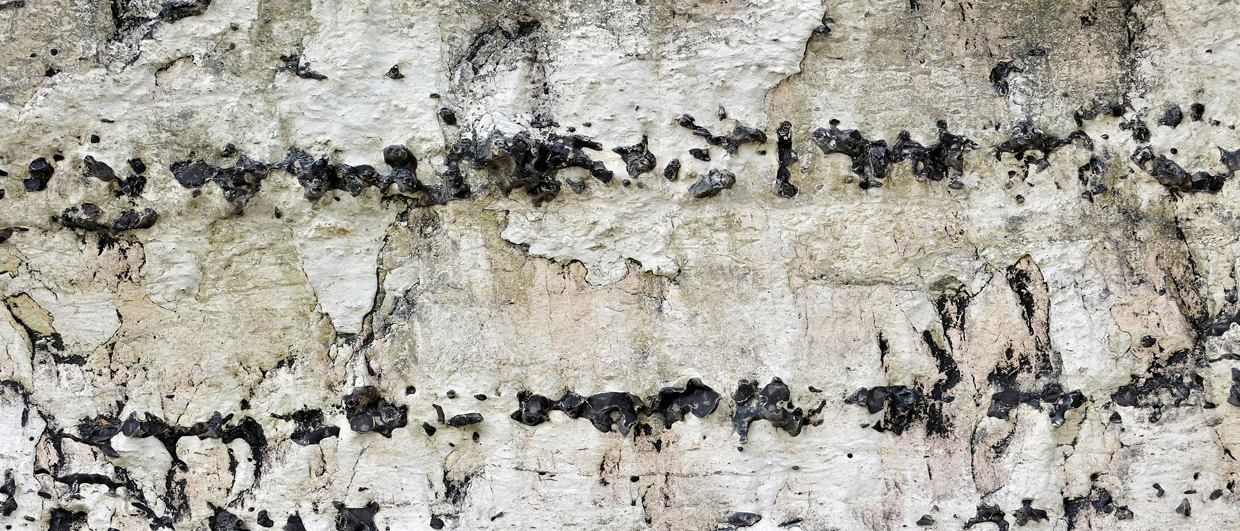In Late Jurassic times, an overall north-south trending graben system transected the North Sea as a response to tensional stresses building up in the wider area. The grabens were connected to the open oceans further north, whilst the faulted margins and the adjacent footwalls were subaerially exposed.

This setting of steep topographical gradients from land to sea created the perfect template for the deposition of submarine fans. The Brae field complex in the UK South Viking Graben is situated in one of these major submarine fan complexes derived from the adjacent Fladen Ground Spur.
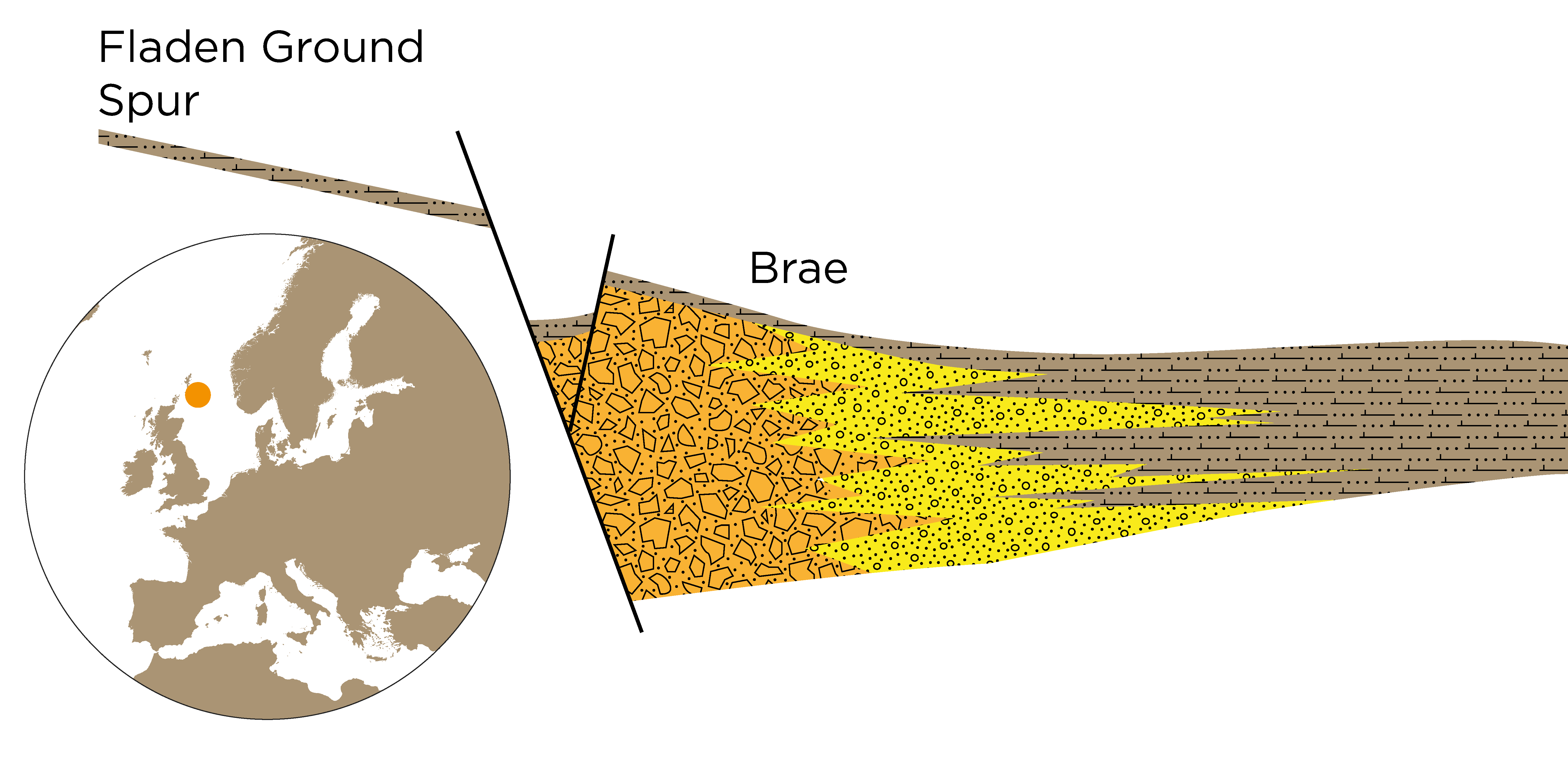
The Brae fields are best known for the thick successions of sand-matrix conglomerates (Photo 1) deposited as submarine fans right across the faulted basin margin. This succession can attain a thickness of up to 4 km in places. Core porosity in the sand-matrix conglomerates can be up to 16%, with permeability up to 300 mD.
The spectacular core sample in Photo 2 shows how a more distal part of the depositional system, where sedimentation of mostly finer-grained lithologies took place, was rudely interrupted by a debris flow that carried large angular clasts in a muddy matrix. In other areas more distal to the main axis of the submarine fans, a more regular alternation of mud and sand deposition took place, as Photos 3 and 4 demonstrate. Subsequent small-scale faulting (Photo 4), folding and sand remobilisation are features commonly observed in the more distal Brae depositional facies.
A return to Houston
The cores pictured here were cut by Marathon Oil. For some reason years ago, the company decided that it would be better to transport the core material to Houston and store it there, rather than keeping it in Aberdeen where a lot of cores from the North Sea are being stored. Now that operator TAQA is decommissioning the Brae fields and intends to dispose of the Brae core material, the cores selected by the British Geological Survey as a replacement for the Brae core already in stock and by North Sea Core for further distribution amongst the geological community, was shipped on pallets back to the UK recently. Full circle for the best of Brae.
The cores used for this article were selected by North Sea Core CIC, the organisation that takes delivery of redundant core from the UK Oil and Gas Industry in order to save it from going to landfill and make it available for the wider geological community. Visit our website for more information about this project.

